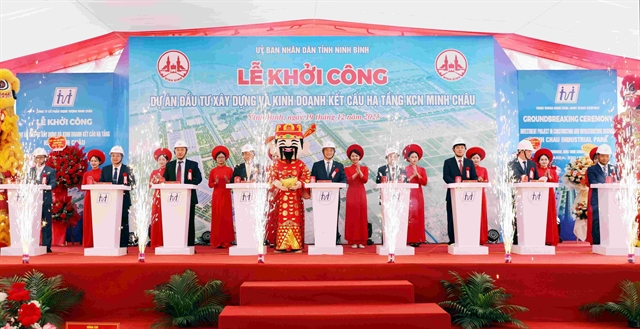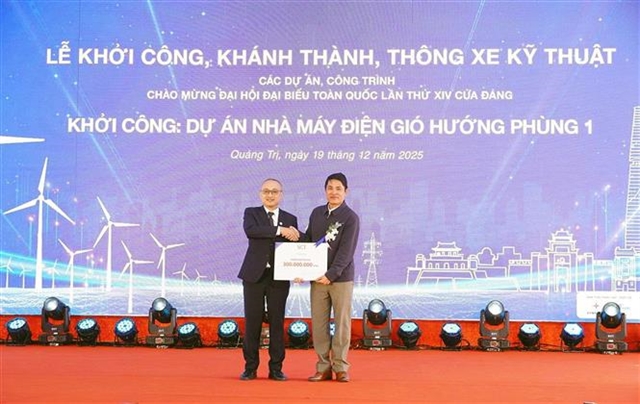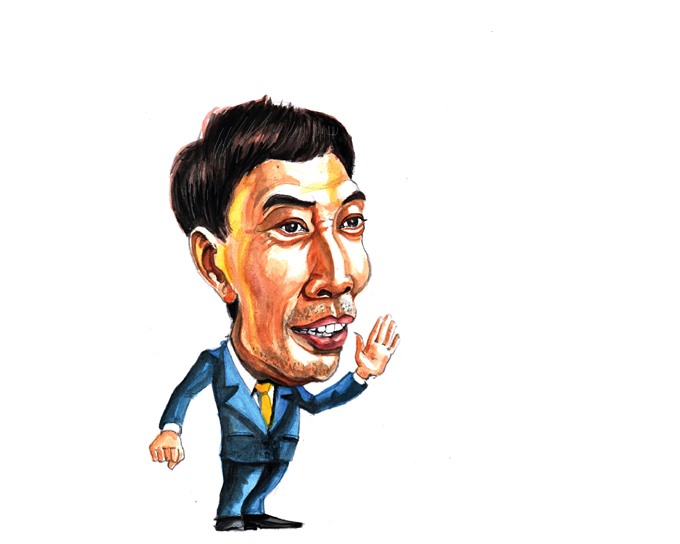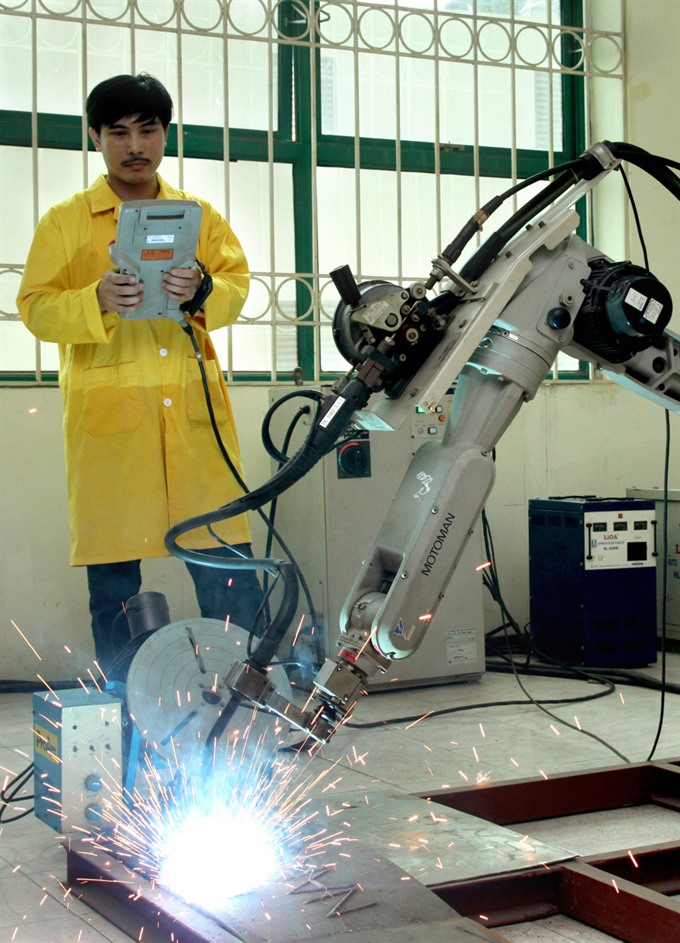 Economy
Economy

 |
| A scientist of the Research Institute of Pulp and Paper Industry (Việt Nam Paper Corporation) checks paper sample. — VNA/VNS Photo Tuấn Anh |
by Võ Trí Thành*
There have been some commentaries on the 2016 Wealth Report which claim Việt Nam is the fastest growing country with a super-rich population, surpassing even India and China.
People are curious about the origin of their wealth and debating their roles and contribution to the country’s development.
Does the rich mean the big and are these rich entrepreneurs well prepared for playing a leading role in Việt Nam’s future growth, which will be based on innovation and sustainability?
The Vietnamese government has specified that the private sector will play a pivotal role in driving the country’s economic development, but, given their big role, Việt Nam’s private enterprises are showing an inclination to get smaller and smaller, in terms of capital capacity, total revenue and labour deployment.
Việt Nam currently has 600,000 companies in the private sector, 95 per cent of which are small- and medium-sized enterprises (SMEs). The Government has set a target of a million enterprises by 2020, but some experts have voiced concerns that the downsizing trend among SMEs has prevented productivity gains through economies of scale, specialisation and innovation.
The Vietnam 2035 report shows that the productivity and competitiveness of Vietnamese private sector are decreasing. Factors such as commercialization of the state which gives State-owned enterprises dominance in various industries, information deficiency, weak competition, feeble enforcement of property rights (land and intellectual property) and distorted production markets are responsible for this state of affairs.
The reality is that many small household businesses have refused to register as formal enterprises. They are reluctant to endure bureaucratic scrutiny and regulatory problems, including paying taxes, ease of starting a business as well the security of property rights, which raises transaction costs.
In order to stimulate growth in this business group, free and fair competition, the heart of a market economy, should be enhanced.
Tycoons, not growth leaders
On the other side of the fence, the number of big companies has been growing, but they are yet to demonstrate their capability in innovation leadership, which is very important in shaping the quality and sustainability of growth.
The public still views owners of these big companies as “tycoons” in terms of their assets but not as growth leaders.
Then there is the opinion that several of these tycoons have earned their fortunes through speculation in stocks and real estate or receiving preferential treatment through their cosy relationship with government officials.
So, what is a big company? The Top 500 Vietnamese Largest Enterprises (VNR500) ranks companies by revenue, profit, total assets and number of employees, but these criteria are just signs of outward strength.
Big means this
A real big company should demonstrate its might in research and development (R&D), brand name and distribution networks, which are the norm when it comes to multinational companies. More importantly, the company’s growth must have spillover effects on smaller firms and contribute to the country’s sustainable development.
If these qualitative criteria are applied, very few Vietnamese companies are gradually moving towards the “big” status.
Many State-owned enterprises are big but have weak innovation capacity. Foreign direct investment (FDI) companies possess cutting edge technology but their vertical link with local companies is weak due to low utilisation of inputs made in Việt Nam, as well as limited capabilities of local companies in absorbing new technology.
Until now, only a few technology (IT) companies have paid attention to R&D, like Viettel and FPT.
Viettel has set up its own research institutes operating under the model of big international corporations, putting aside 10 per cent of its pre-tax profits, worth about VNĐ2.5 trillion (US$110 million) annually, for R&D purposes. FPT allots 5e per cent of its pre-tax profit for R&D per year.
On a smaller scale, some big firms have invested in hi-tech agriculture, like Vinamilk, TH Milk and VinGroup, but they have stayed at using technology, not innovating on their own.
In the world, big corporations like Samsung, Intel and Microsoft spend tens of billions of dollars for R&D each year. In Japan and South Korea, the majority of invention and innovation has come from the SME sector.
We have to ask: Why have Vietnamese companies not grown up in the true sense of the word?
What will it take?
Some people have argued that big firms have dominant market shares and can control prices, so they become easily complacent and ignored the need to innovate.
Others say big enterprises have strong financial capacity and human resources and should pioneer research, but need the Government’s support in technological reforms.
Việt Nam is below average on R&D spending as a share of GDP, when compared with countries at similar levels of development. So far, no Vietnamese brand name is associated with spearheading technology products.
For technology to lead development and drive sustainable growth, companies should develop an aspiration to go global (market, norms and standards), build a distinctive corporate culture as well as a creative working environment that encourages innovation.
The companies’ work culture should have a hard to please element, and they should incessantly seek competitive pressure to push them ahead. To become a growth leader, they must also create positive spillovers, linking smaller firms and startups to create a large network by showing they are the best destination for talent.
Few takers
Not many Vietnamese enterprises can do this at the moment.
In an innovation-led economy, most firms and economic sectors require continual updating of new knowledge and skills. The Government will play an important role in supporting this process.
Việt Nam aims to develop a modern national innovation system of organizations and policies that promote technological reforms. Firms, especially those in private sector, should take a central role in building this system.
The government should build effective incubators and accelerator programmes like a Việt Nam Silicon Valley wherein mentoring, business plan preparation and access to finance are all provided.
The government can also offer direct and indirect financial support to firms. For indirect support, it can ease access to information and provide tax relief for hi-tech firms. Directly, it can provide funding to firms and organizations with good track records. The government should support the winners (not pick “winners”). Give them a chance and see how really big they can get.
Best firms can also receive research orders from the Government, after going through an evaluation process that is competitive, peer-reviewed and merit-based.
To sum up, the acceleration of technological growth, robotics and artificial intelligence poses both challenges and opportunities for domestic companies. For companies to grow big and become leaders, the Government should enhance fair competition and well-enforced protection of property rights, while companies should, on their own, develop global aspirations, thirst for updated technologies, and nurture and retain talents.
* Võ Trí Thành is a senior economist at the Central Institute for Economic Management (CIEM) and a member of the National Financial and Monetary Policy Advisory Council. A doctorate holder in economics from the Australian National University, Thành mainly undertakes research and provides consultation on issues related to macroeconomic policies, trade liberalisation and international economic integration. Other areas of interest include institutional reforms and financial systems. He will author Việt News’s new column, “Analyst’s Pick,” which will run on the first Tuesday of every month.
 |
| Võ Trí Thành |
 |
| A technician controls a welding machine. VNA/VNS Photo Hoàng Hùng |




